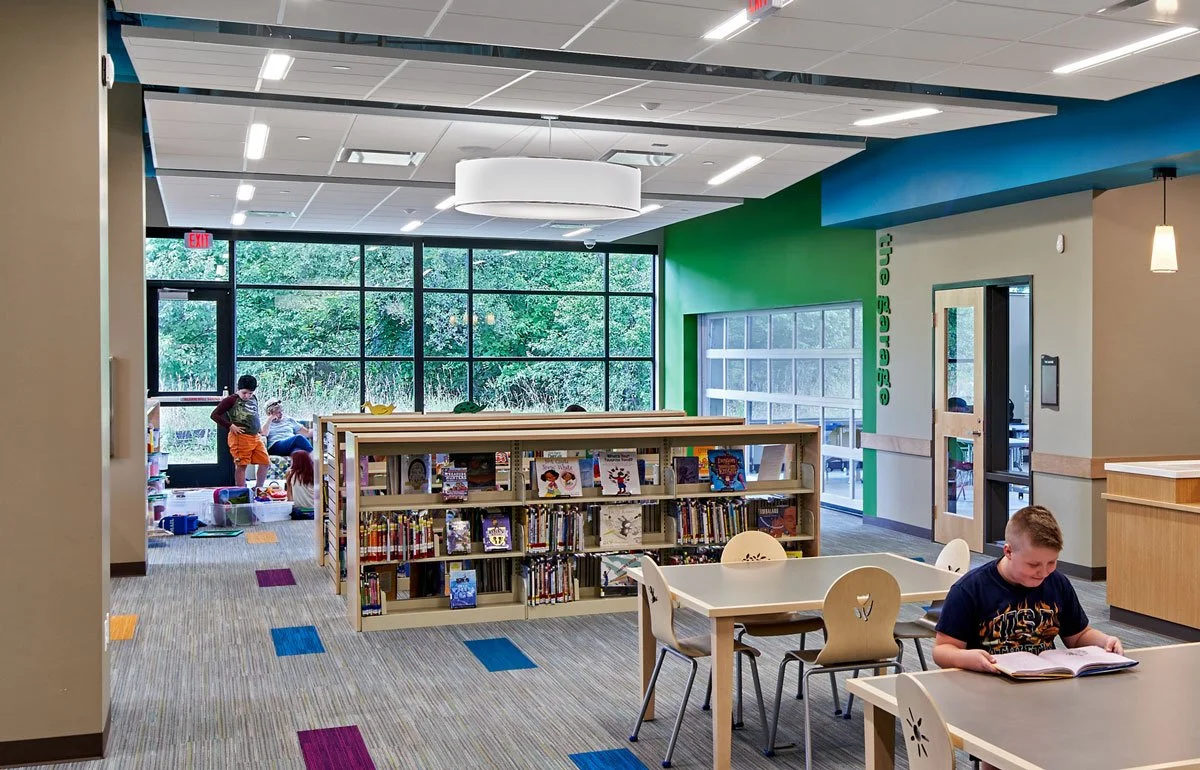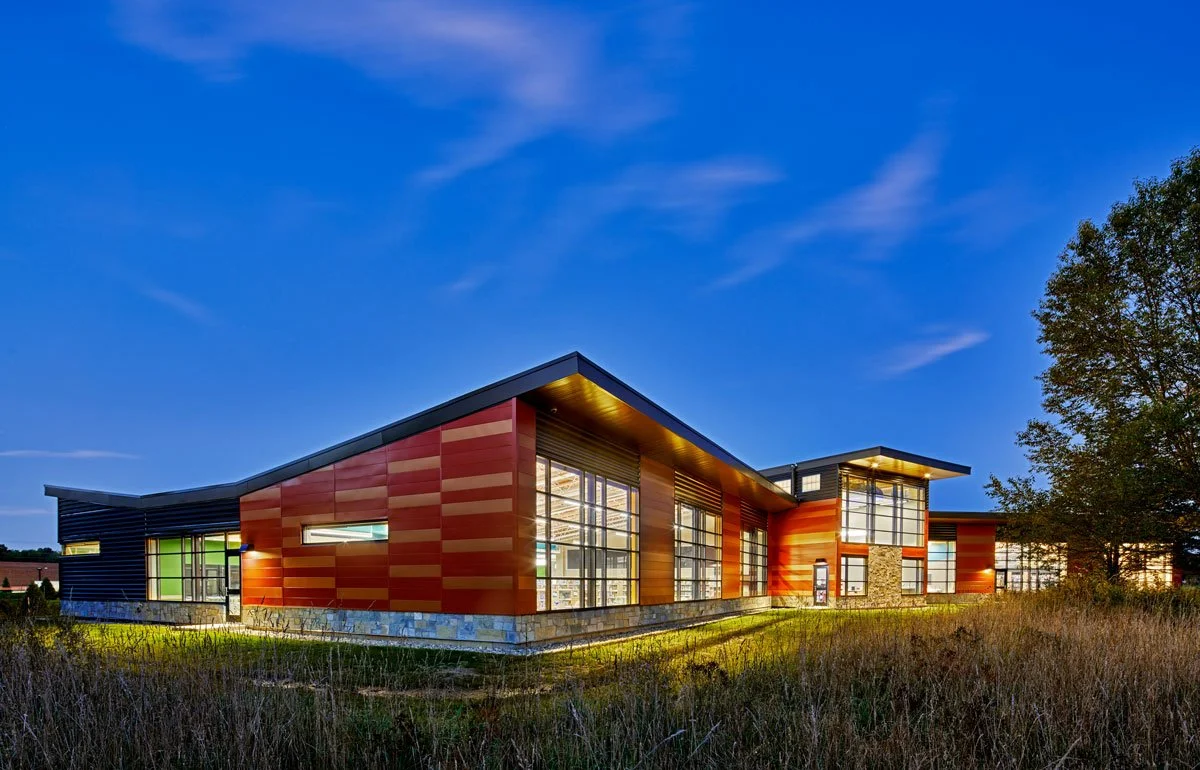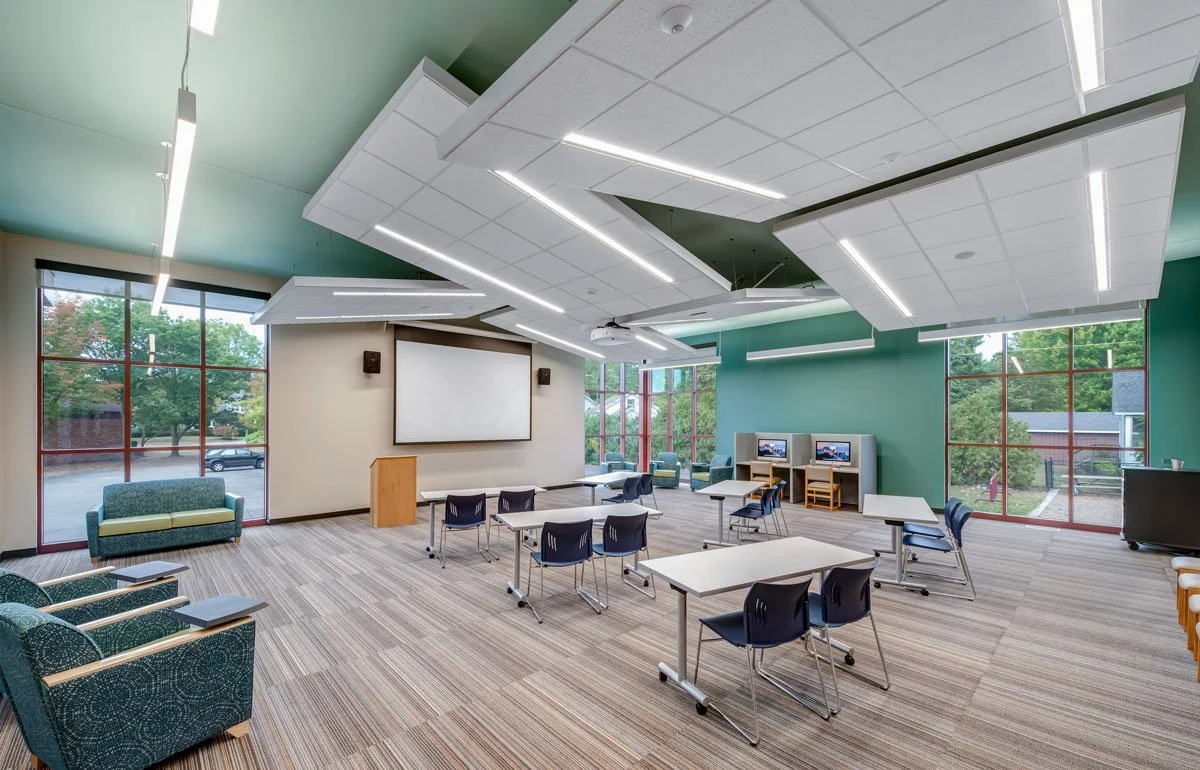7 Library Design Trends for a Changing World
Libraries have always been a vital resource in their neighborhoods, evolving as community needs change. So what do cutting-edge libraries look like in the information age, especially post-pandemic? Here are just a few of the library trends we’re beginning—or continuing—to see in the design world.
Versatility
Libraries wear many hats. A single space can host educational programs, fitness classes, community forums, think tanks, art classes, and so much more. Library designers know how versatile these spaces need to be and often incorporate things like furniture on wheels or garage doors that can turn a large room into two breakout spaces. The library needs to do it all, accommodating single-person quiet study, small group study, meetings, and large community events.
Flexibility
Communities can’t and shouldn’t have to invest in major improvement projects to the same public building every few years. Because libraries are such versatile yet long-lasting community resources, these buildings are often designed with clear avenues for expansion or improvements as technology and community needs change.
Long-Lasting & Bold
Although libraries are built to last for generations, that doesn’t mean these buildings should be boring. The best libraries are boldly customized to their community. For example, C2AE designed White Lake Community Library with colors that evoke Michigan’s changing seasons. The key is to use durable, easy-to-maintain materials. Wherever possible, it should be simple to remove and replace items without having to make drastic or costly alterations. Another consideration in this vein is green design. Buildings with small carbon footprints reduce energy costs and make public investments last longer.
Community Collaboration
We’re better together! Community partnerships are an increasingly important component of the modern library’s success as an institution in a world of shrinking budgets, skeptical constituents, and massive competition for the public’s attention and dollars. In turn, the library is often closely connected to community programs, both in terms of space and staffing. Whether you are holding a public forum, supporting early childhood development programs, or hosting carpentry workshops, libraries can help.
New Collection Dynamics
Physical collections, while still important, are now sharing the spotlight with other library offerings. Media looks different than it did 20 years ago, so libraries should present their media differently. In general, libraries today have less shelving, more technology, and more focused catalogs. In addition, libraries are using more electronic catalog options, like Hoopla and OverDrive to supply readers with a wider collection of books, movies, and music than the physical building could store.
The best libraries have well-curated digital collections that integrate cleanly with material resources. Before 2020, studies revealed that library guests using an electronic workstation would stay twice as long as guests at tech-free workstations. During COVID-19, communities used libraries’ electronic catalogs as a lifeline for entertainment and enrichment. We see electronic options only becoming more popular moving forward.
Work Away from Home
As more employers see the advantages of flexible, remote work, many workers may rely on the library as a second office. During the pandemic, the line between work and home blurred. Patrons see libraries as an extension of their homes and workplaces, a comfortable third zone for work, chores, hobbies, and enrichment. Libraries today are accommodating this perception shift with a variety of spaces aimed at supporting group work, idea incubation, individual focus, skill development, and child care. Similarly, libraries can act as a safe social center away from school for students. Libraries with distinct kids’ and teens’ areas inspire a sense of independence in young people.
Pandemic Lessons Learned
During the pandemic, many Americans worked remotely at least some of the time. That means communities with limited broadband experienced a disproportionately higher threat from the coronavirus. Due to HVAC needs and spatial limitations, most libraries were ill-equipped to assist communities in this situation.
Imagine what a library with the right resources could do for a community—with space to accommodate social distancing, adequate air flow and micron filtering, easy-to-clean materials, tutoring for students, incubator spaces and makerspaces for small business owners, and so much more. Libraries today are beginning to envision the possibilities and prepare for the future.







